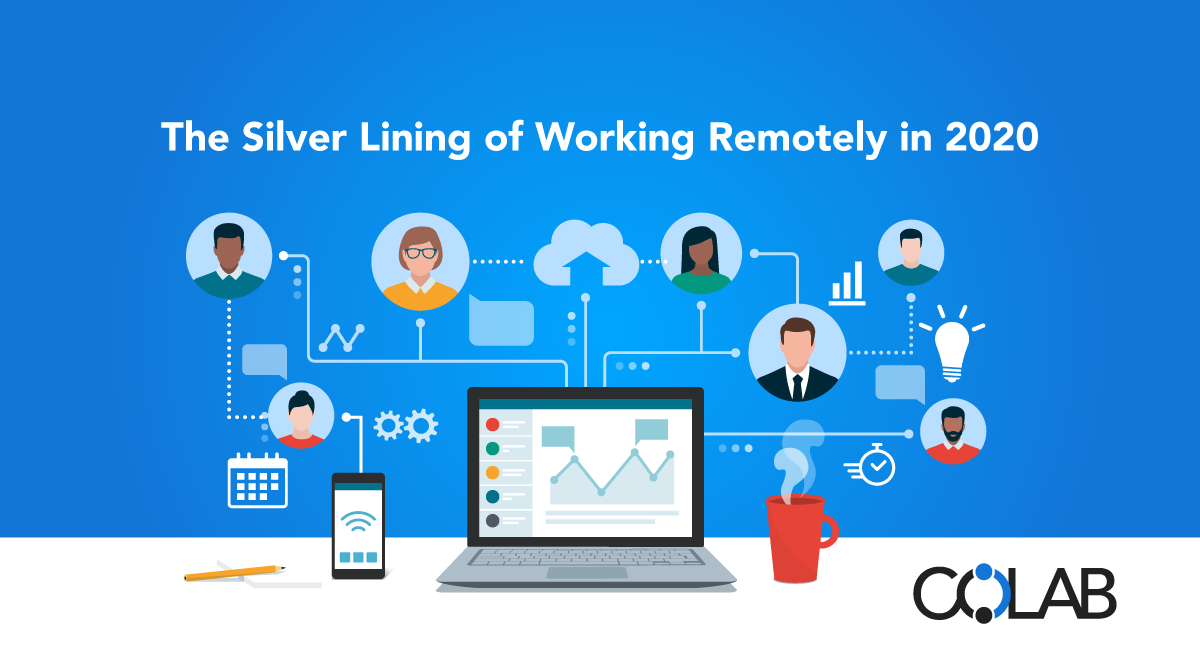Optimists say every cloud has a silver lining, but with the pandemic of 2020, it’s been hard to find one. Some would argue the bright side is that we all appreciate our families and friends more and aren’t likely to take for granted spending restriction-free time together. But for businesses trying to reopen, stay open and grow, the silver lining may lie with allowing employees to continue working remotely, either at home or in a coworking facility near where they live.
According to the US Census Bureau and the Department of Labor Statistics, in 2020 (before the arrival of COVID-19) 3.4% of the US workforce were already working remotely. Studies show that by the end of 2021, 25 to 30% of the workforce will be working remotely at least several days a week.
According to a Gartner, Inc. study in 2020, 74% of CFO’s polled said they plan to move at least 5% of their previously offsite workforce to permanently remote positions post COVID-19. And nearly 25% say they would move 20% of workers to permanently remote positions.
While the circumstances that caused the surge in remote working in 2020 were tragic, research shows that the continuance of this growing trend will generate significant benefits.
Working Remotely Benefits the Environment, Employees and Employers
Environment:
Studies by Global Workforce Analytics show that if employees with a remote-compatible job worked remotely at least half the time, society could save annually:
- $20 million in gas
- 54 million tons of greenhouse gas emissions
- 640 million barrels of oil
- 119 billion miles of highway driving
Employees:
- 91% of remote workers feel more valued and productive overall.
- 75% of people who work remotely say they experience fewer distractions.
- 80% of remote workers experience less work-related stress
- Remote workers have more time and freedom to exercise, eat healthy and take needed recharge breaks.
- 84% say that this work flexibility helps them better manage their mental health.
Employers:
- Gallup research found that 54% of office workers would leave their job, for one with more flexibility. And Gallup further states that job flexibility increases engagement.
- Allowing employees to work remotely significantly affects employee retention and potentially lowers on-boarding costs for companies.
- Employee turnover in companies that allow remote work is 25% lower than in companies that don’t offer the option.
- Gallup research finds that optimal engagement occurs when employees spend 60 to 80% of their time working off-site.
- Companies can save as much as $11,000 annually for each employee that works remotely at least half-time.
- 85% of businesses say that implementing flexible work locations have made their company more productive.
- Remote workers can be 20 to 25% more productive than their onsite colleagues.
- Nielsen research indicates 55% of global online consumers are willing to pay more for products and services from companies with a positive environmental impact.
All of these benefits bode well for coworking facilities, like CoLab. As working remotely continues to grow, so will the coworking industry. 71.5% of workers that used coworking prior to the pandemic plan to return to it. And 54.9% of remote workers that didn’t use coworking before said they’ll consider joining one in the near future.






